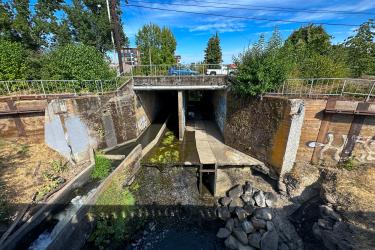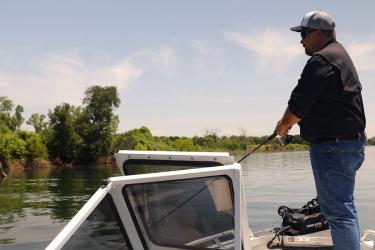Steelhead smolts suffer high mortality during the two weeks after entering the marine environment. We seek to understand the ecological conditions in the inland waters of Puget Sound that contribute to the early marine mortality of ESA-threatened steelhead. Also, we propose and test solutions to support steelhead recovery. Using acoustic telemetry techniques, we study annual survival patterns to identify temporal trends and investigate how individuals respond to environmental change.
Research Objectives
- Identify locations and environmental or ecological factors that contribute to the high mortality of migrating smolts.
- Quantify behavioral patterns that may affect early marine survival.
- Provide results-driven solutions to increase migration success through habitats within the steelhead migration corridor.
- Test the efficacy of proposed solutions.
- Manage a network of acoustic receivers in Puget Sound to support telemetry efforts throughout the Puget Sound basin.
Current Projects
- Environmental drivers of steelhead survival
- Predator-prey interactions in the Nisqually Estuary
- Hood Canal Bridge Ecosystem Assessment
- Puget Sound Basin Acoustic Telemetry Network
Collaborators
- Long Live the Kings
- Nisqually Indian Tribe
- Port Gamble S’Klallam Tribe
- Washington Department of Fish and Wildlife
- Pacific Northwest National Laboratory
- Squaxin Tribe
- Pacific Ocean Shelf Tracking Network
Contact
Megan Moore, Research Fisheries Biologist




